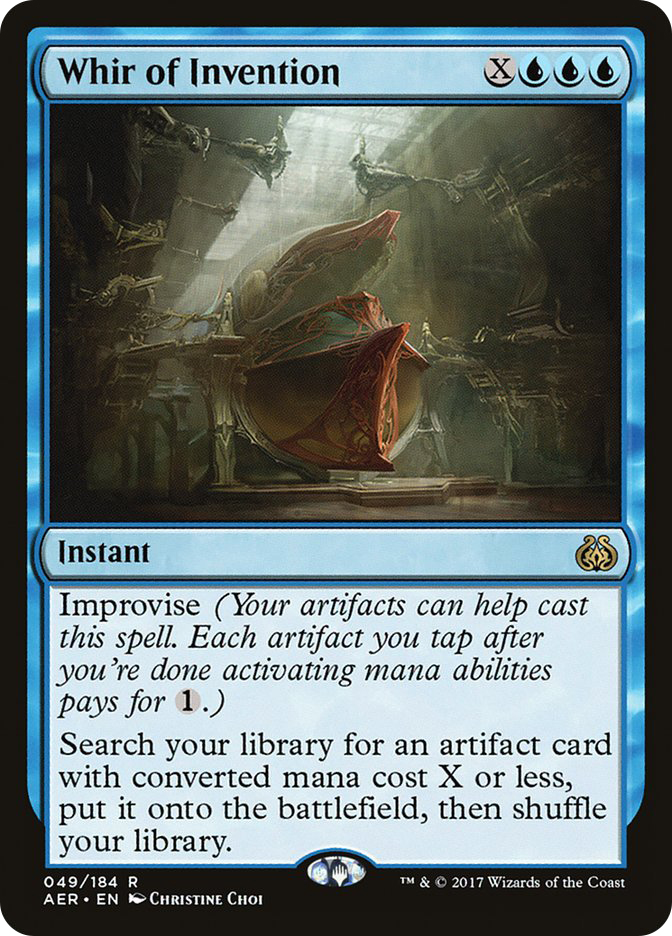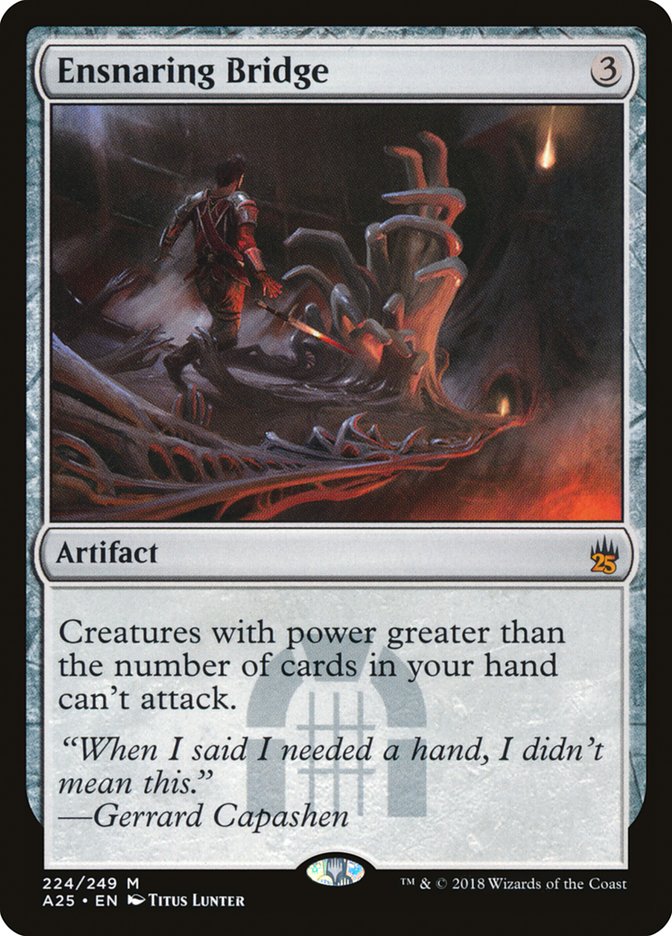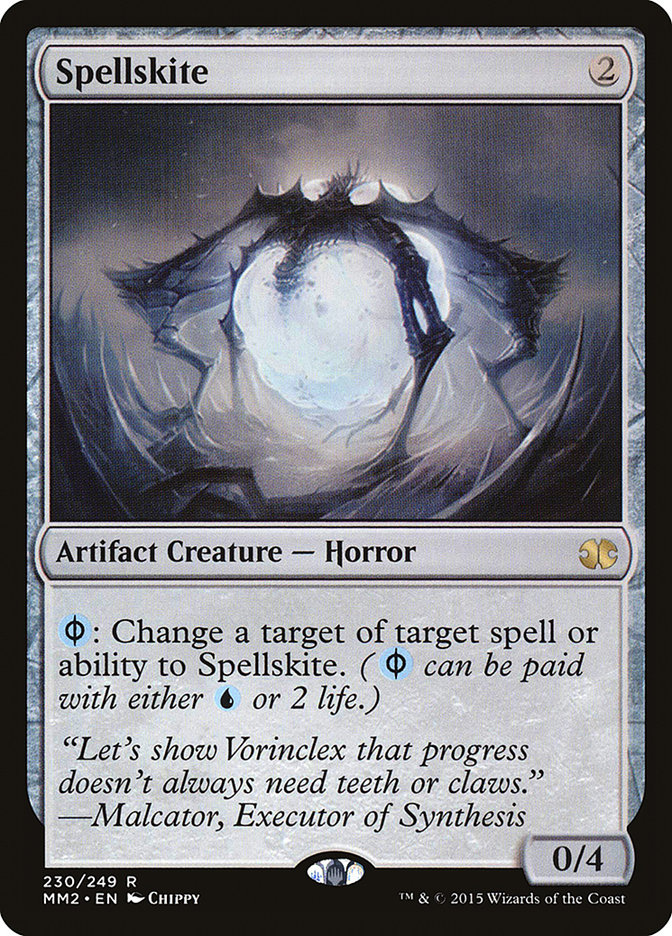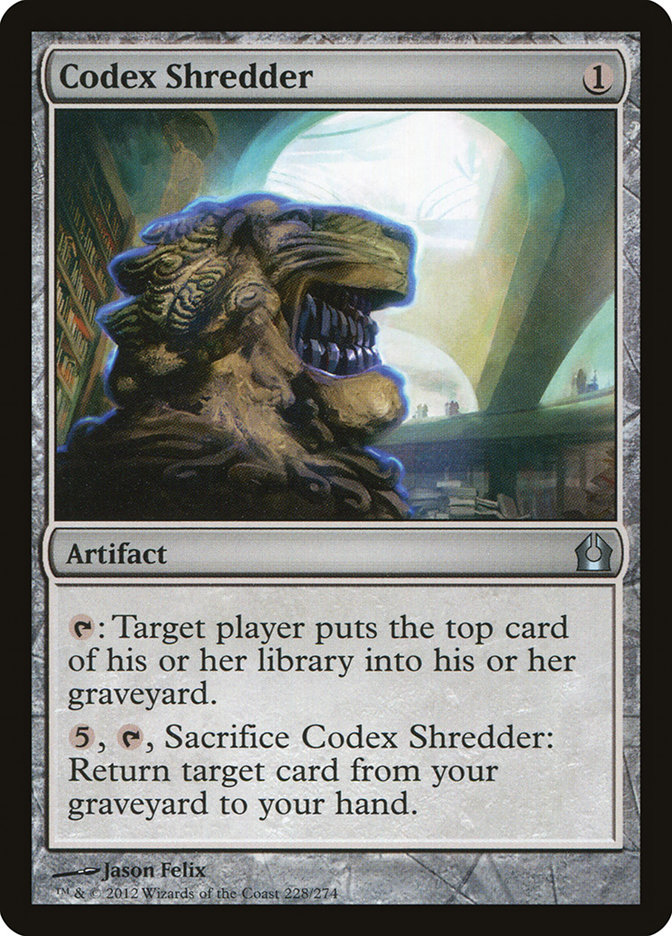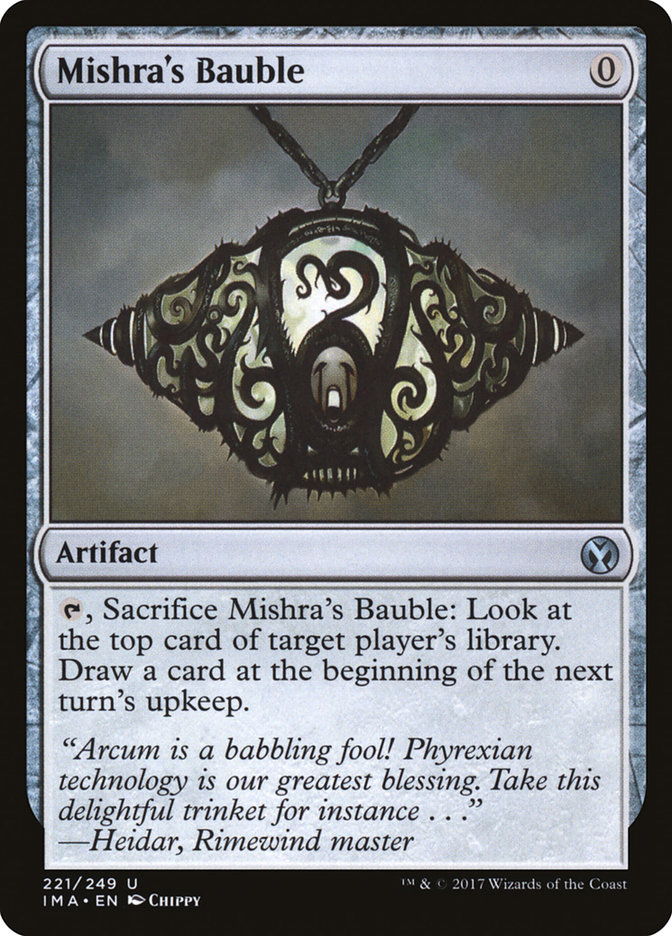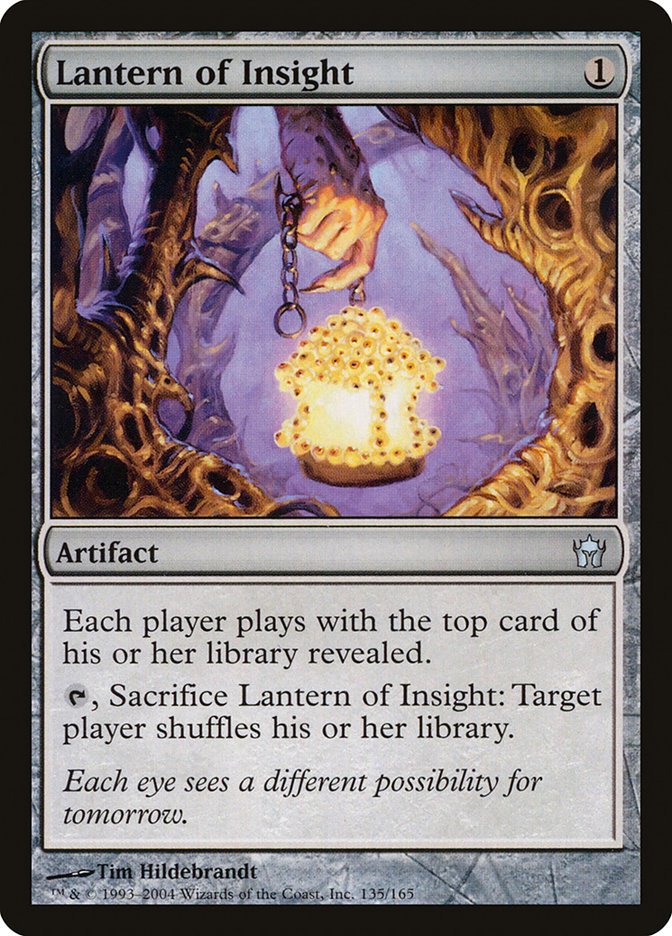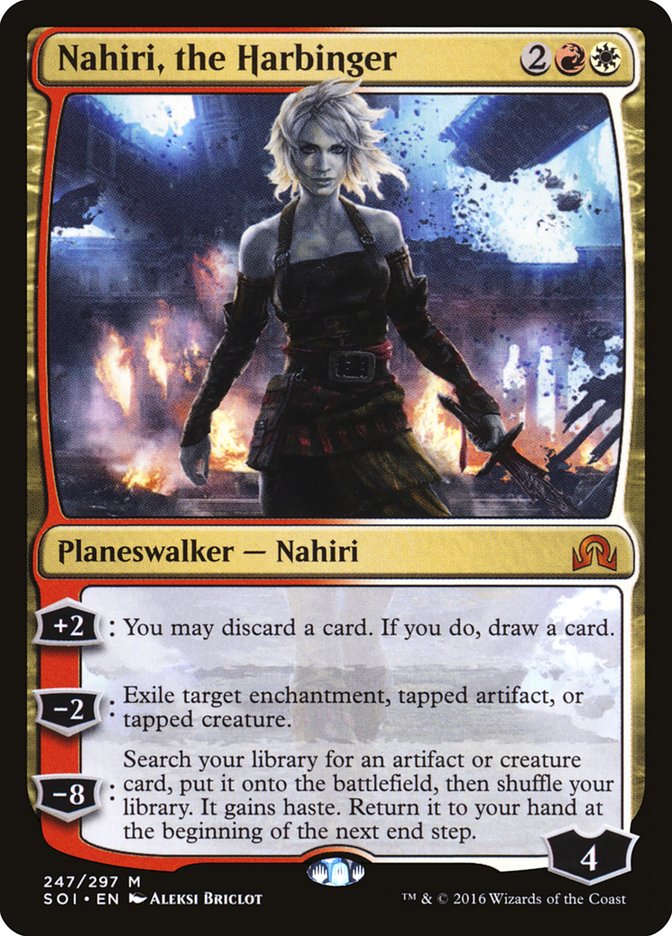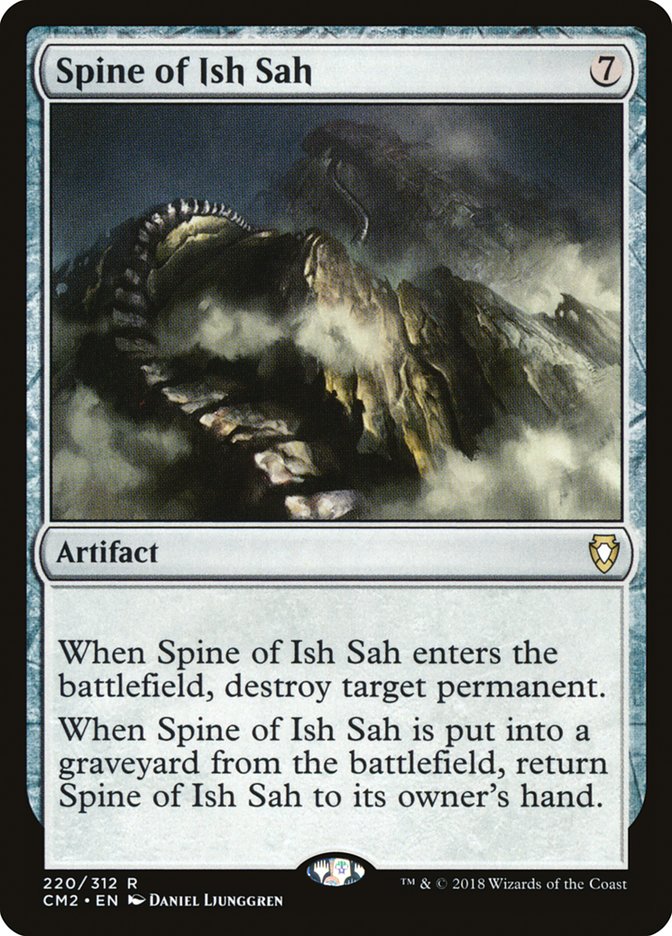I’ve been staying in Seattle for the last few weeks living with Alex West
because there’s a string of West Coast GPs I’m playing in, and
he’s recently gotten into streaming.
His stream has mostly explored his own fairly unique take on Whir of
Invention control in Modern, which has gone in some pretty interesting
directions, and I think it’s a deck worth understanding and taking
seriously, so today I’d like to give you a rundown of where he’s at and how
he’s gotten here.
Despite being a key piece of both Lantern Control and Grixis Whir, Whir of
Invention might be a relatively unexplored card in Modern–there are just
so many artifacts in the format, and many of them work together in various
ways such that having a powerful card that finds either half of a combo and
a wide assortment of utility effects can open up a pretty big space to
explore.
I’d say Whir’s first real success in Modern was in Lantern Control, a deck
that’s perfect for Whir of Invention because it relies largely on a single
artifact that it needs in most matchups (Ensnaring Bridge), but then once
it has it, it wants a combination of Codex Shredder and Lantern of Insight,
with one Lantern and as many Codex Shredder as possible. Whir is perfect
for letting you get the missing piece as needed, especially since the
artifacts are so cheap.
Grixis Whir makes slightly worse use of Whir of Invention, to my mind,
because the mana is generally a little more stretched and it relies a
little less on specific combinations of artifacts–Grixis Whir is a weird
deck; it’s similarly an Ensnaring Bridge deck, but instead of controlling
the opponent’s draw step with Codex Shredder and hand with discard, it
attempts to stop them from casting spells with Chalice of the Void and mana
denial, and uses Whir to find more lock pieces to cut off means of
interaction.
Thopter Prison is like a more proactive take on Grixis Whir. After testing
on his stream, this is the list Alex played at GP Portland:
Creatures (4)
Lands (20)
Spells (36)

This deck is a more proactive version of Grixis Whir. Instead of just
trying to lock the opponent out forever, this deck attempts to close the
game with the combination of Thopter Foundry and Sword of the Meek (which,
for anyone unfamiliar, allows you to pay one mana to gain a life and make a
1/1 flier as many times as you want). Against fast decks that do something
big, this can be too slow or not a big enough effect, but if you can add
Krark-Clan Ironworks to the combination, now you get infinite mana,
Thopters, and life, because you can sacrifice a Thopter for two mana, which
can make two more Thopters. That means that this deck can potentially gain
infinite life on turn 3, thanks to Mox Opal.
The interesting thing about this deck is that it’s very much half
prison/half combo–you don’t need to lock your opponent out in any way if
you just assemble Thopter Foundry and Sword of the Meek in a lot of
matchups, but you can also ignore your combo for a long time if you get
Ensnaring Bridge, protect it with Spellskite, and maybe use Pithing Needle
on their cards that let them win despite Ensnaring Bridge. Eventually
you’ll find your combo and kill them, but if they can’t do anything,
there’s no hurry.
As the backbone of several archetypes, it’s easy to call Faithless Looting
one of the most powerful cards in Modern, but on its surface, it may not
look like this deck uses it quite as well as others; however, the card
plays well here, partially as a way to navigate the dual nature of the
deck. The most obvious great interaction is with Sword of the
Meek–Faithless Looting gets it into your graveyard where Thopter Foundry
can return it without needing to spend the two mana to cast Sword of the
Meek, but going further, this deck is full of bullets like Pithing Needle
and purely redundant effects like Thopter Foundry and Ensnaring Bridge, so
it’s easy to find cards you don’t mind discarding and very important to
find your missing lock or combo pieces (depending on which path you’re on).
The final important function of Faithless Looting is that it allows you to
get clunky cards out of your hand to get under Ensnaring Bridge in a timely
fashion against aggressive decks.
It feels weird to play a deck where Spellskite is the only creature,
because you open yourself up to creature removal. Lantern used to do this a
long time ago, but stopped around when Infect became less common. As it
happens, Modern is in a weird place right now where Spellskite doesn’t
actually turn on dead cards against very many decks. Very few people are
playing Fatal Push. A few decks play Path to Exile, but that’s not that bad
and ultimately, not even that much of the metagame. A large portion of the
field is either relying on Lightning Bolt or simply not playing dedicated
creature removal, so for the most part, Spellskite gets to protect your
other artifacts from more versatile removal or, better yet, make life
miserable for your opponents who are trying to target their own things. If
you have two of them, it’s not a great answer, but it can theoretically
stop you from losing to Ulamog, the Ceaseless Hunger.
Pithing Needle, Damping Sphere, and Witchbane Orb are fairly obvious
bullets against most strategies that don’t require attacking, and the final
bullet is Bottled Cloister, which serves two separate functions, both of
which are important. The first is that it sets your hand size to zero on
your opponent’s turn so they can’t attack, which ensures that you don’t
lose to small creatures while trying to get the last few cards out of your
hand, so if you have too many lands or too many Whirs, just find Bottled
Cloister and you’re all set. The other function is that it draws an extra
card, which makes it a great bullet to find if you don’t have either half
of your combo and you’re looking to get something proactive. This is
especially important after sideboarding, as you often remove your combo
entirely, and it becomes the only proactive card you can Whir for.
Speaking of sideboarding, that’s where this deck’s take is really novel.
Every other artifact deck concerns itself with what to do if your opponent
has a Stony Silence, playing some combination of discard, counterspells,
and enchantment removal. In this deck, there isn’t a single card that can
stop your opponent from drawing or casting a Stony Silence and no way to
remove it from the battlefield. Instead, your plan is just to accept that
your opponent will control Stony Silence sometimes, but most decks that
have access to it are so weak to Ensnaring Bridge that you just accept that
they turn off a lot of your deck with Stony Silence and you turn off a lot
of their cards with Ensnaring Bridge; you side in Ghirapur Aether Grid and
Tezzeret, Agent of Bolas so you can win even when a lot of your cards don’t
function properly.
There are some matchups where the Thopter Foundry engine doesn’t line up
well, and you become a pure prison deck, such as against Tron, for example,
where your Thopters are just too slow and ineffective. There, you’d
sideboard like this:
In:
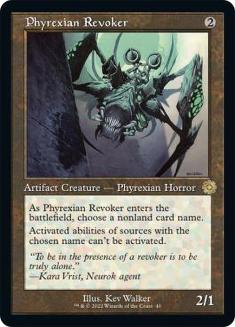
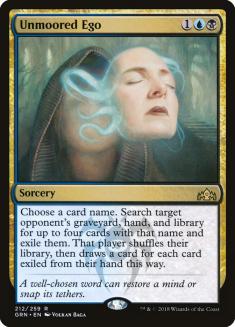



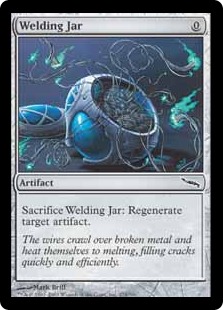



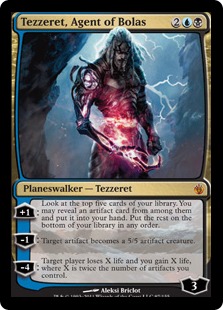


Out:
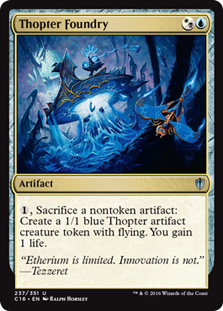



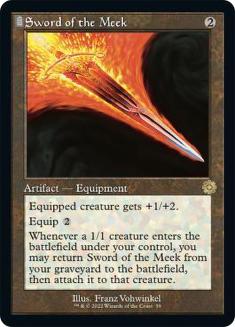



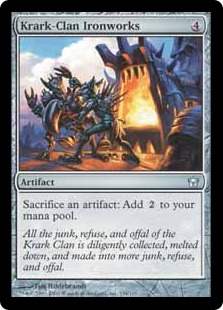
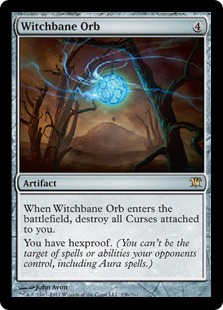
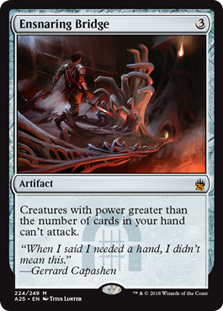

As in this case, Unmoored Ego is really the card that makes this deck. It’s
so hard for a deck that doesn’t lose to Ensnaring Bridge to also not lose
to Unmoored Ego–Tron, KCI, Ad Nauseam, Scapeshift, Storm–these are all
matchups that would be pretty hard without Unmoored Ego to turn things
around.
I’ve been discussing the decklist Alex played at GP Portland, but it’s
developed a little since then. The most exciting change to me is replacing
Mishra’s Bauble with Codex Shredder. This is a weird change, but it’s not
surprising that I’m excited about it–I generally love Codex Shredder and
don’t like Mishra’s Bauble, but it’s a good change for this deck,
specifically. The idea with Codex Shredder is that it’s a cheap artifact to
turn on Mox Opal and cast Whir of Invention, but it also finds Sword of the
Meek and Faithless Looting periodically. In the lategame you can cash it in
for whatever you need, most likely. Mishra’s Bauble is nice because it
doesn’t cost a card, and it can also tap for Whir or turn on Mox Opal, and
it helps you get a smaller hand for Ensnaring Bridge; however, if you’re
doing those things with it, you’re not getting your card back for a while.
During that time, Mishra’s Bauble is doing nothing for you while Codex
Shredder is generating value periodically, and then when you’re ready to
cash it in, you get selection in a deck where it’s very important instead
of a random card. You’ll often have to wait a little longer to get the free
mana to cash in Codex Shredder, but with eight great cards to mill, I think
it ends up performing better. As an aside: Unfortunately, it is
worse against Stony Silence because you can’t cycle it from your opening
hand, so it always gets trapped, but as long as there aren’t too many Stony
Silences being played, I think it’s worth it.
There are a few other cards that are reasonable considerations that have
been tested but haven’t made the current iteration of the deck:
It seems weird to play Codex Shredder without Lantern of Insight, but
without any way to see the opponent’s hand, it’s harder to control their
draw step properly, and with no other mill rocks like Pyxis of Pandemonium
and no Ancient Stirrings, it’s much less reliable to have a mill effect to
go with the Lantern of Insight, and it’s horrible by itself, as it mostly
just lets your opponent decide when to use their fetchlands. This is still
worth considering as a one-of to find with Whir of Invention or Inventors’
Fair, but they already have so many good bullets to find that it’s likely
that you’d draw it more than you’d want to search for it and it wouldn’t be
worth it.
This is a great answer to Stony Silence and other enchantments. The problem
is that it requires white mana, which is demanding when you also want
Unmoored Ego, which is extremely important. For the moment, the thinking is
that Tezzeret is good enough to win without killing their enchantments if
you can resolve a four-mana planeswalker, such that it’s not worth
stretching the mana.
This deck can certainly be built to play few one-mana spells–Pithing
Needle can become Sorcerous Spyglass, Codex Shredder can become Mishra’s
Bauble, and then Chalice of the Void can replace Faithless Looting. The
problem is that this involves weakening other cards and losing Faithless
Looting for a card that’s only good in some matchups. Ultimately, with a
very low chance of casting it on the first turn, the card just isn’t strong
enough to justify its inclusion, particularly given that the impact of
moving Pithing Needle up the curve is that it can also push you to replace
Spellskite with Welding Jar, which is another power level downgrade, and
also specifically hurts against Hexproof and Infect, two of the decks where
Chalice might be good, but it’s worse than Spellskite.
With Krark-Clan Ironworks and Thopter Foundry to sacrifice this to, a
single copy offers the deck the theoretical ability to answer any number of
permanents instead of zero, which can obviously be a game-changing
difference, but it’s very slow, and there are surprisingly few matchups
where you really care about answering any of your opponent’s permanents.
I think this deck is in a pretty good place. I seriously considered playing
it at #GPPDX, but I was a little scared to play a deck that interacts only
in very narrow ways; however, as Modern becomes less about trading and more
about cutting off lines, this becomes a very reasonable choice. What I mean
by that is that cards like Arclight Phoenix and strategies like Dredge are
really punishing for removal, but very weak to Ensnaring Bridge. Similarly,
Ancient Grudge isn’t even particularly good against Ironworks, but Unmoored
Ego is amazing. This is a kind of deckbuilding that entirely embraces this
strange direction of the format, pushing far enough that it’s a little
jarring in how it eschews traditional means of interactions, but it’s
starting to look like the correct way to understand the format at this
point.


